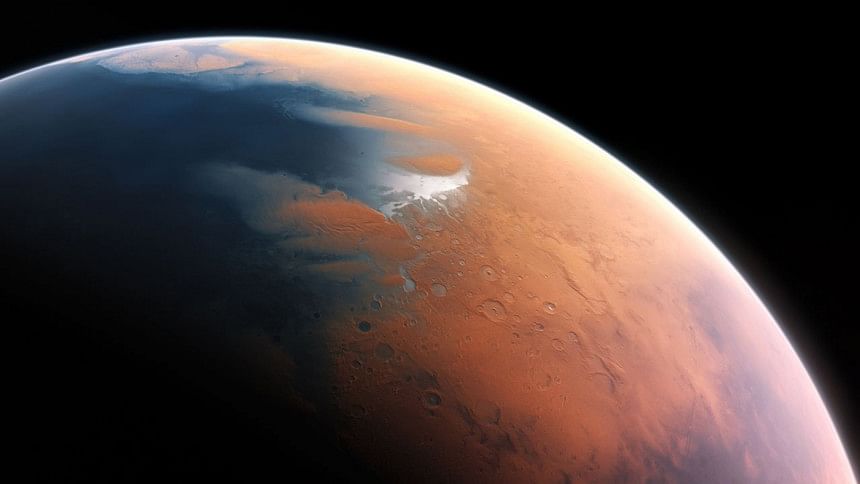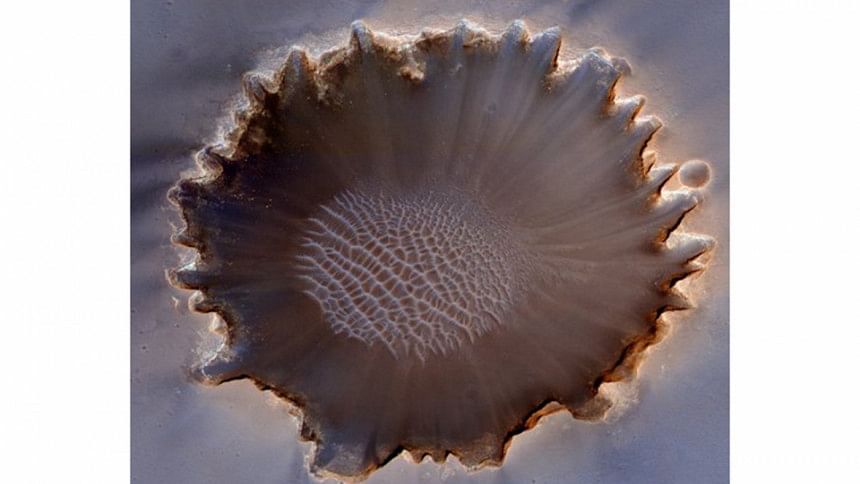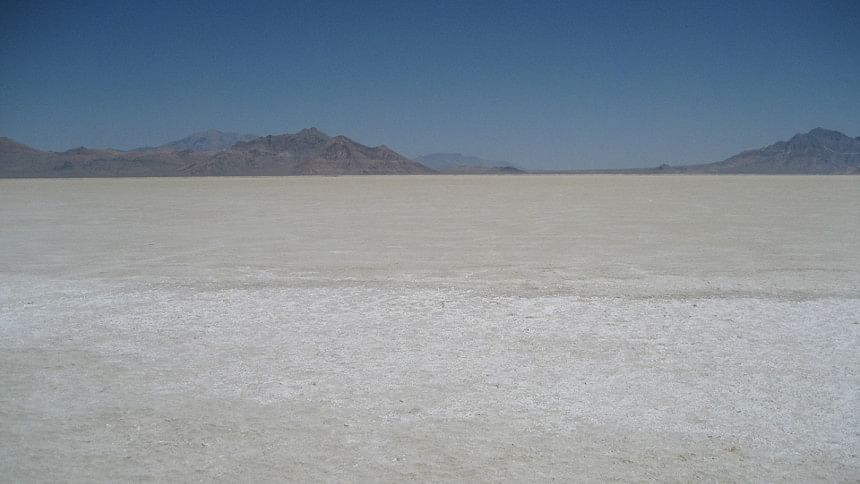Ancient life preserving lake discovered in Mars

A trio of scientists says they've identified the best place to look for evidence of ancient life on Mars — one of the youngest lake-bearing basins ever discovered, reports Business Insider.
Though Mars has no liquid water today, the Red Planet was submerged under vast oceans billions of years ago. And where there's water, there's the potential for life.
Scientists suspected that after the oceans evaporated, that was it for water — and life — on Mars. But a recent paper published in the journal Geology says that's not the case.
Mars had a second wave of surface water about 3.6 billion years ago — 200 million years after scientists thought Mars had seen the last of its liquid water. This water, the researchers report, was located in a lake inside a basin near the Martian equator, about 100 miles from where NASA's Opportunity rover rests today.
It is one of the youngest lakes and therefore possibly one of the last liquid water sources to ever exist on Mars, the researchers report.
The discovery is exciting for the prospect of ancient Martian life, explains lead author Brian Hynek who is a research associate at the Laboratory for Atmospheric and Space Physics at Colorado University-Boulder:
"Having a later stage of water on Mars is probably a good thing for the potential for life on that planet because it gave life more time to be conceived," Hynek told Business Insider. "There was life on Earth when this lake was active so by that analogy, we can say there's potential that Mars had microbial life and this was a great place where it could have resided."
Getting around a tricky problem
Crater in Meridiani Planum, where the researchers found evidence for one of the youngest lakes ever discovered.
The researchers are investigating the age and origin of hundreds of salt deposits across Mars to map how much water existed on the surface, reports Business Insider.
"Just like on Earth, when salts are left somewhere, that probably means that water was there," Hynek said. "So, these are indicators that water was there in some form."
Estimating the age of these salt deposits is tricky. The way scientists determine the age of anything on Mars is by counting the number and measuring the size of impact craters in that region. Then they compare this information to similar regions on the Moon, whose age we have a better handle on.

But wind has eroded the regions where these salt deposits are located, which makes it hard to estimate their age. This latest paper is the first time anyone has ever calculated with any confidence the age of one of these salt deposits, Hynek said.
Using images taken by NASA's Mars Reconnaissance Orbiter, which has been orbiting Mars since 2006, the team studied the terrain and geography around the basin. They found evidence to suggest that at one point, the lake grew large enough to spill over the rim of the basin, carving channels in its wake.
The researchers traced these channels to neighboring volcanic plains hundreds of miles away that are about 3.6 billion years old. Because the water channels over-cut the volcanic plains, they must be younger. That means the lake must also be younger than 3.6 billion years.
Life locked in salt
Bonneville Salt Flats in Utah are similar to the salt deposits on Mars.
Right now, there are no plans to visit this basin in search for the potential for life. But Hynek hopes that this latest paper will make the basin a more popular touch down point for the NASA Mars rover scheduled to launch in 2020.
Hynek has a pretty good idea of where he'd look first:

"I think you'd want to target the salt deposits," he told Business Insider. "As the water evaporates away a lot of organic matter and a lot of microbial evidence gets encased in salts and is preserved for long time periods."
Though there was liquid water in the basin, there are still other factors that would ultimately determine whether life could have existed there, Hynek cautions. The lake's salinity, acidity, oxygen levels, and available nutrients for food are all important.
The lake had a relatively low salt content, which would have made it ideal for life, Hynek said. However, the other three factors are hard to measure without sending a rover there to scoop up the soil and analyze what's in it.
So far, this single lake is the only evidence for water on Mars around 3.6 billion years ago. Hynek plans to continue studying these salt deposits to see if there's more evidence of water on a younger Mars.

 For all latest news, follow The Daily Star's Google News channel.
For all latest news, follow The Daily Star's Google News channel. 



Comments